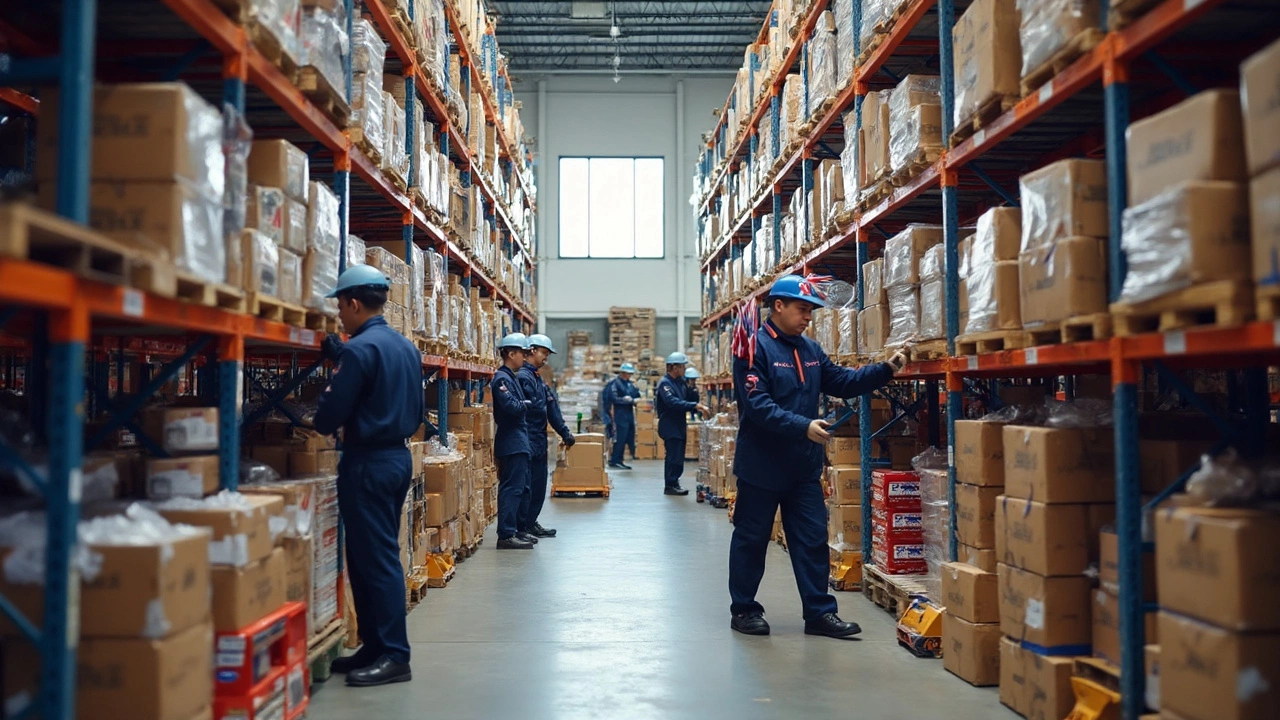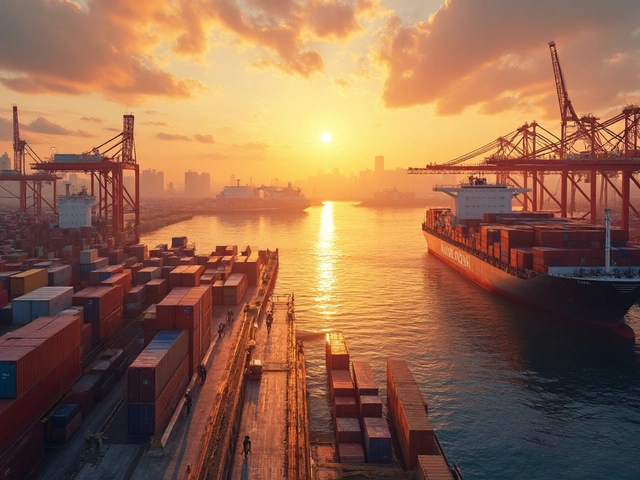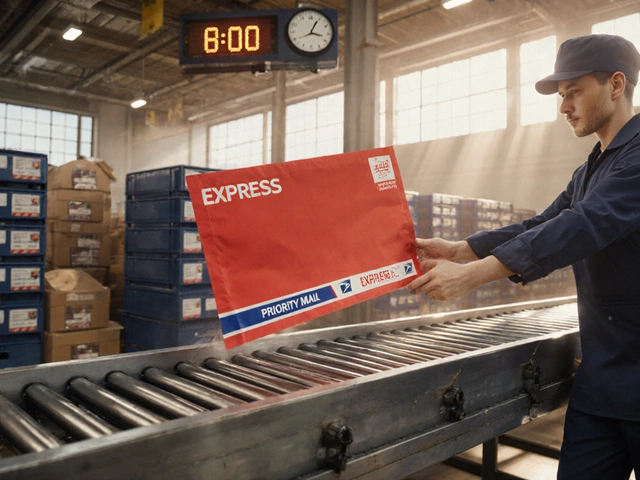Picture this: your favorite snack travels thousands of miles before you even spot it on the shelf. The journey isn’t chaos with trucks and ships running wild—it’s a carefully choreographed dance. That’s the kind of magic logistics companies handle every day. Their work powers our world, making sure everything from tiny phone chargers to massive wind turbines get exactly where they’re supposed to go, right on time. But what actually goes on behind the scenes at a logistics company? Most folks only notice if something arrives late, never thinking about the maze of systems, people, and tech working in sync to deliver the goods. No matter what you use or buy, chances are a logistics company had a hand in it. Let’s take a closer look at this backbone of commerce.
The Backbone: What Does a Logistics Company Actually Do?
If you were expecting a logistics company to just drive stuff around, you’re missing half the show. Sure, transportation is a huge slice of their pie, but their work stretches way beyond. At its core, a logistics company plans, coordinates, and manages how goods move from point A to point B—sometimes all the way to point Z and back again. It’s like being the master puppeteer for an endless stream of packages.
Here’s where things get interesting: logistics isn’t just about moving finished products. It involves every raw material, part, or item used along the supply chain. So while you see a shiny new laptop, the logistics folks saw circuit boards shipped from Taiwan, cases trucked in from Mexico, and batteries flown from China—all perfectly timed and sequenced so the warehouse isn’t bursting at the seams.
One thing to remember: most logistics companies specialize in certain types of freight or industries. Some only handle perishable goods, some are the backbone for e-commerce giants like Amazon, and others manage overseas shipments or oversized machinery. The biggest players, like DHL, FedEx, or Maersk, run global empires with thousands of workers and fleets of planes, ships, and trucks. Small local outfits might focus on boutique products but still use the same careful process in managing movement, storage, and timing.
The world of logistics isn’t just about muscle—it’s fueled by software, data, and mind-bending coordination. Top companies use custom tech to track packages in real-time, predict traffic jams, reroute around storms, and even automate warehouses using robots. Did you know the average package travels over seven different hands, companies, and links before it hits your doorstep? That’s a lot of plates spinning, and logistics pros keep them all in the air.
To keep things clear, here’s a table breaking down some common types of logistics service providers:
| Type | Main Service | Industry Focus |
|---|---|---|
| Freight Forwarder | Coordinates cargo movement across multiple transport modes | International trade, manufacturing |
| Third-Party Logistics (3PL) | Handles storage, shipping, and basic transportation | Retail, e-commerce |
| Fourth-Party Logistics (4PL) | Manages end-to-end supply chain for clients | Large corporates, global supply chains |
| Courier/Express Delivery | Time-sensitive last-mile delivery | Documents, small parcels |
| Warehousing Specialist | Stores, sorts, and handles inventory | Bulk goods, seasonal items |
It’s not all about moving boxes; the logistics world is surprisingly layered.
Inside the Supply Chain: The Nitty-Gritty of Warehousing and Transportation
So what exactly fills a logistics company’s day? Let’s get under the hood. First, their warehouses are a universe unto themselves. Picture endless racks stacked with products, every item tagged and scanned, ready to leap onto the next leg of its journey. These warehouses can be climate-controlled for food, locked down for pharmaceuticals, or designed for giant machinery parts. The real magic is inventory management: logistics staff keep a real-time eye on what’s coming in, what’s shipping out, and what needs to be restocked—sometimes down to the minute.
Modern warehouses don’t resemble the dusty storage units of old movies. Picture robots zipping between aisles to fetch products, drones scanning barcodes, and managers peering at huge screens showing every bin’s status. Big names—like Amazon—use “pick-and-pack” robots that work 24/7. In 2023, Amazon’s fulfillment centers processed about 1.5 million packages daily. Imagine the choreography involved in moving all that stuff through doors without a hitch!
Now, let’s talk transportation. This is the glamorous part—trucks roaring down highways, cargo ships gliding across oceans, cargo jets rushing urgent deliveries. But there’s way more to it than driving. Logistics pros must plot routes for speed and cost, dodge closed roads, reroute around natural disasters, juggle customs paperwork, and watch weather forecasts 24/7. Did you know a big shipping container might travel by ship, rail, and truck—and legally change hands and ownership along the route?
Here’s another thing you might not expect: logistics companies often track shipments using IoT sensors that monitor temperature, location, and even vibration. So if your frozen veggies are on the move, that company knows instantly if the truck’s cooling stops working. This tech means fewer spoiled goods and happier customers.
Dive into staffing for a second: a big logistics company employs drivers, warehouse workers, software geeks, customs experts, planners, safety inspectors, and a small army of customer service reps. Their secret? Seamless teamwork. Everyone—whether scanning boxes or mapping out a cross-country journey—has to nail their part so that last critical delivery isn’t late. Lose track for even half an hour, and an entire chain can grind to a halt.
Here are key tips companies swear by:
- Never let orders pile up—continuous movement keeps costs down.
- Always plan for the unexpected: weather delays, strikes, or new rules can hit anytime.
- Invest in tech—real-time tracking saves time, money, and headaches.
- Build strong relationships with carriers and customs officials. Fast talking beats endless paperwork.
- Train staff to spot mistakes—small errors in labeling or booking cost big later.
Bottom line: inside every shipment, there’s a whole team obsessing over speed, safety, efficiency, and making sure nothing goes wrong.

How Logistics Companies Shape Modern Business
If you want to see how powerful logistics companies are, just glance at any giant retailer or e-commerce site. Walmart, for example, manages one of the world’s largest private truck fleets—more than 12,000 trucks moving products to almost 5,000 stores in the US alone. Savvy logistics is why you never see their shelves empty, even during Black Friday madness. Their logisticians have to forecast demand, move stock across states, and make hundreds of changes week by week.
Amazon changed the game, too, by basically promising that “prime” orders pop up at your door in two days or less. The secret isn’t magic—it’s supercharged logistics, with fulfillment centers located in strategic areas, sophisticated inventory systems, and algorithms that can sometimes predict what you’ll buy before you do. According to recent data, almost 80% of Fortune 500 companies use third-party logistics partners to help them handle the scale and speed their customers want now.
But it’s not just the giants. Small and midsize businesses rely on logistics providers to reach more customers without buying their own fleet or renting massive warehouses. They can “plug in” to the provider’s system, using just as much storage or transport as they need—nothing wasted. If you’re running an online shop out of your garage, you, too, can ship across continents thanks to logistics specialists who handle all the cross-border hurdles.
Another lesser-known fact: logistics companies are crucial for crisis response. After natural disasters, teams race in with emergency supplies—food, water, medicine. Companies like UPS and FedEx often work with the Red Cross and United Nations. They’re the reason aid reaches people in time, by navigating battered roads and airports that regular drivers can’t handle.
There’s an environmental side, too. Many logistics leaders now focus on “green logistics”—optimizing routes to cut carbon emissions, using electric delivery vehicles, or testing biofuel-powered ships. Maersk, the global shipping giant, committed to having zero-emission vessels by 2030.
If you ever wondered why holiday online orders can still reach you even during a blizzard or how strawberry shipments reach you in winter, now you have your answer: smart logistics is working overtime, every single day.
Finding the Right Logistics Partner: What to Look For
Choosing a logistics company can feel overwhelming if you haven’t navigated it before. But knowing what to watch for makes all the difference. Here’s a peek at what really matters.
First, size isn’t everything. Small providers can offer boutique service and flexibility, great for businesses that need special handling or fast changes. Larger companies might provide more tech, global reach, and lower rates due to their scale. So, weighing your priorities is key.
Reliability is non-negotiable. Look up recent delivery stats, on-time rates, and damage or lost shipment history. Real numbers tell you way more than a sales pitch ever could. Honest companies can provide references or direct you to online reviews from real clients.
Ask about technology. Can you track your shipment live? Do they use software that alerts you to problems before they become disasters? In 2024, companies not using at least basic shipment tracking are behind the times, period. Also, ask about integration—does their system play nicely with your sales software or order platform?
Support is another deal breaker. No business wants to lose money because they can’t reach their freight provider during a crisis. Choose a company with solid 24/7 support, quick answers, and real humans ready to help. Bonus points if they offer solutions or fix issues before you even realize there’s a problem.
Finally, know your own needs. Logistics isn’t one-size-fits-all. Do you need international shipping, climate-controlled storage, specialized handling for fragile goods, or rapid delivery? The best fit is the one that “gets” your business as well as you do.
- Check certifications for safety and international standards (like ISO or CTPAT for security).
- Ask about insurance options—accidents happen, and you want your goods covered.
- Review potential extra fees (fuel surcharges, customs, storage) so there aren’t any surprises.
- Plan for seasonality—some providers struggle when order volume spikes during holidays.
- Build a working relationship; strong communication solves issues before they turn big.
Working with a logistics company isn’t just shipping boxes—it’s plugging into a massive, high-tech system that can make or break your bottom line. Whether you’re a business owner dreaming of global sales, or just curious how your same-day delivery actually works, understanding how these companies tick is worth its weight in gold. The next time you open a package, remember you just witnessed the quiet, complex art that keeps the world moving.”





